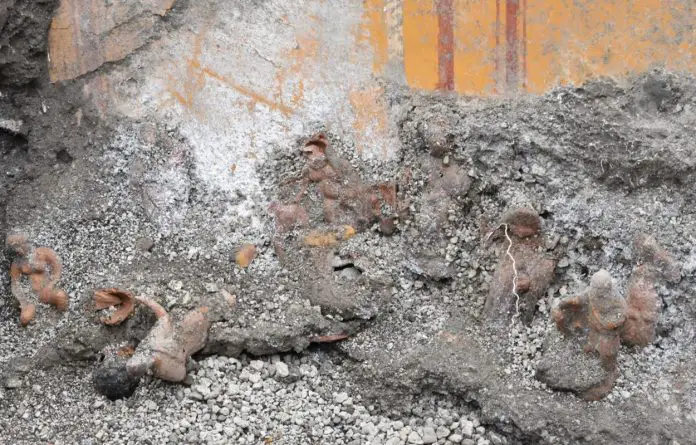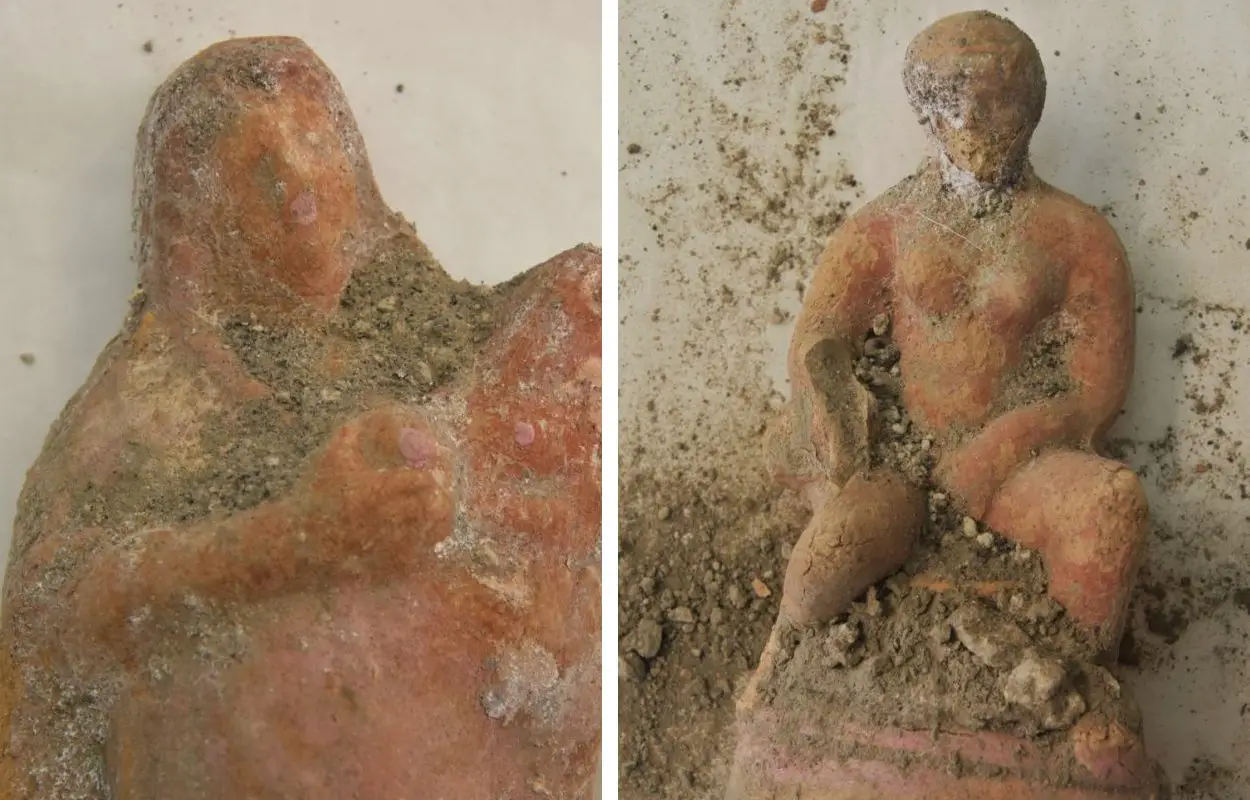
Archaeologists have unearthed 13 terracotta figurines during excavations of a domus at Pompeii.
Pompeii was a Roman city, located in the modern commune of Pompeii near Naples, in the Campania region of Italy.
Pompeii, along with the Roman town of Herculaneum, were buried under 4 to 6 metres of volcanic ash and pumice during the eruption of Mount Vesuvius in AD 79.
The Vesuvian eruption spewed forth a deadly cloud of super-heated tephra and gases to a height of 33 km, ejecting molten rock, pulverised pumice, and hot ash at 1.5 million tons per second, ultimately releasing 100,000 times the thermal energy of the atomic bombings of Hiroshima and Nagasaki.
Recent excavations of a domus adjacent to the “House of Leda and the Swan” along the Via del Vesuvio have revealed 13 terracotta figurines measuring around 15 centimetres in height.

According to the researchers, the figurines may be associated with Cybele and Attis, a telling of the story of the Phrygian great mother goddess’s tragic love for a mortal.
Attis, was unaware of the love Cybele bore him, and in time fell in love with the daughter of the king of Pessinus. Consumed by jealousy, Cybele drove Attis to madness, leading him to castrate himself and tragically end his life at the base of a pine tree.
The figurines where found in what was likely the decorated atrium within the domus, where archaeologists also uncovered the head of a clay rooster and a glass pine cone.
Ongoing works at the House of Leda (first excavated between 2018 and 2019) have also revealed a finely frescoed room with roundels containing depictions of female faces, in addition to two further domus dwellings to the north and south of Leda’s house.
Header Image Credit : POMPEIISITES

